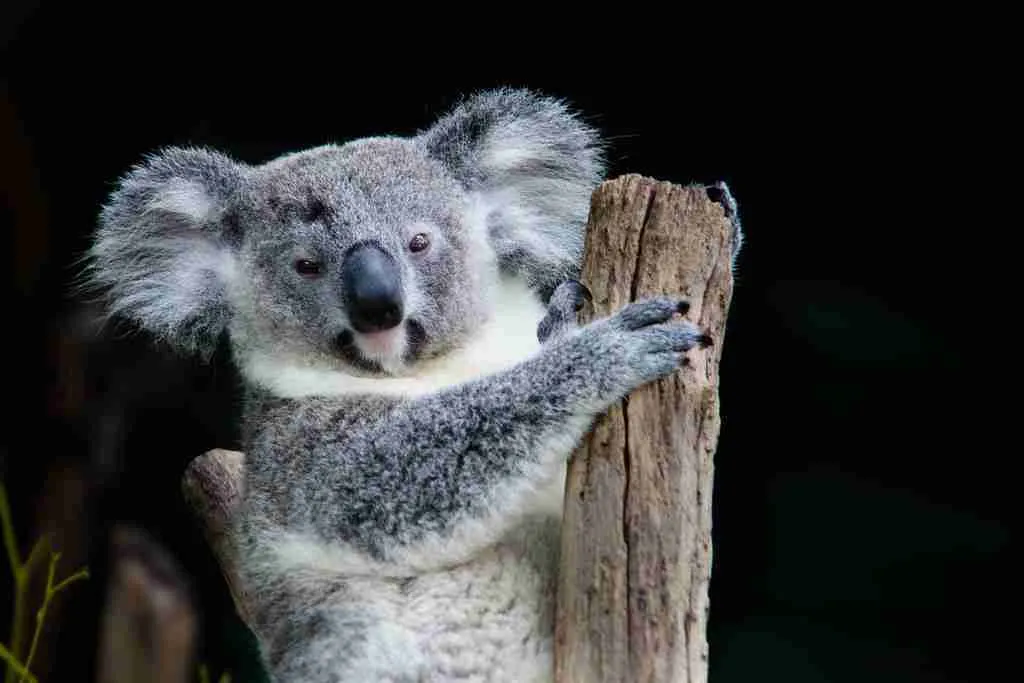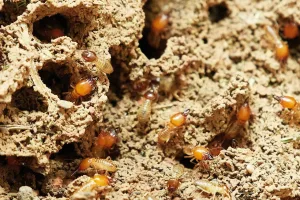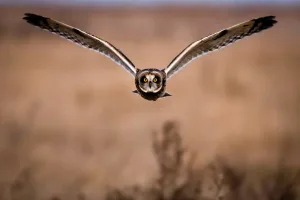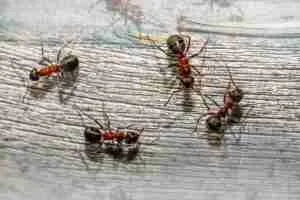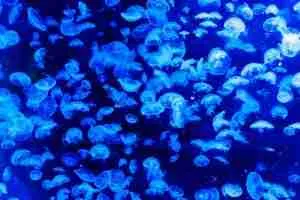25 Fun Facts About Koalas | The World’s Dumbest Cuties
-
Koalas have a special cartilage pad in their nose that enhances smell.
-
Their brain is one of the smallest among mammals relative to body size.
-
Koala milk changes composition as the joey grows.
-
They can emit a high-pitched scream when frightened.
-
A group of koalas is called a “colony.”
-
Koalas often sleep with their heads tucked into their chest.
-
Their fur can smell faintly like eucalyptus oil.
-
They have been featured on Australian coins and stamps.
-
Koalas can spread their toes widely to grip smooth bark.
-
Their joeys are born without fur, eyes, or ears.
-
Koalas lick their paws to cool themselves in heat.
-
Mothers sometimes “babysit” joeys for short periods on branches.
-
Each koala produces unique vocal patterns recognizable by researchers.
-
Their digestive system is nearly two meters long.
-
They instinctively choose shady forks for resting in summer.
Table of Contents
1. Koalas are marsupials, not bears.
Koalas carry and nurse their young in a pouch. That puts them in the same group as kangaroos and wombats.
People called them “koala bears” for years. That label often confuses readers who are learning about these animals.
2. A koala joey lives in the pouch for about six months.
After a short pregnancy, a jellybean-sized joey crawls into the pouch. It latches onto a teat and grows safely inside.
Eyes open around day 70, and fur begins to grow. Strong little paws prepare the joey for its first peek outside.
3. Joeys eat a special maternal paste called pap.
Mothers produce this paste when weaning starts. Joeys eat it to gain helpful gut bacteria.
These microbes break down tough eucalyptus leaves. Pap works like a starter kit for digestion.
4. Koalas spend up to 18 hours a day sleeping.
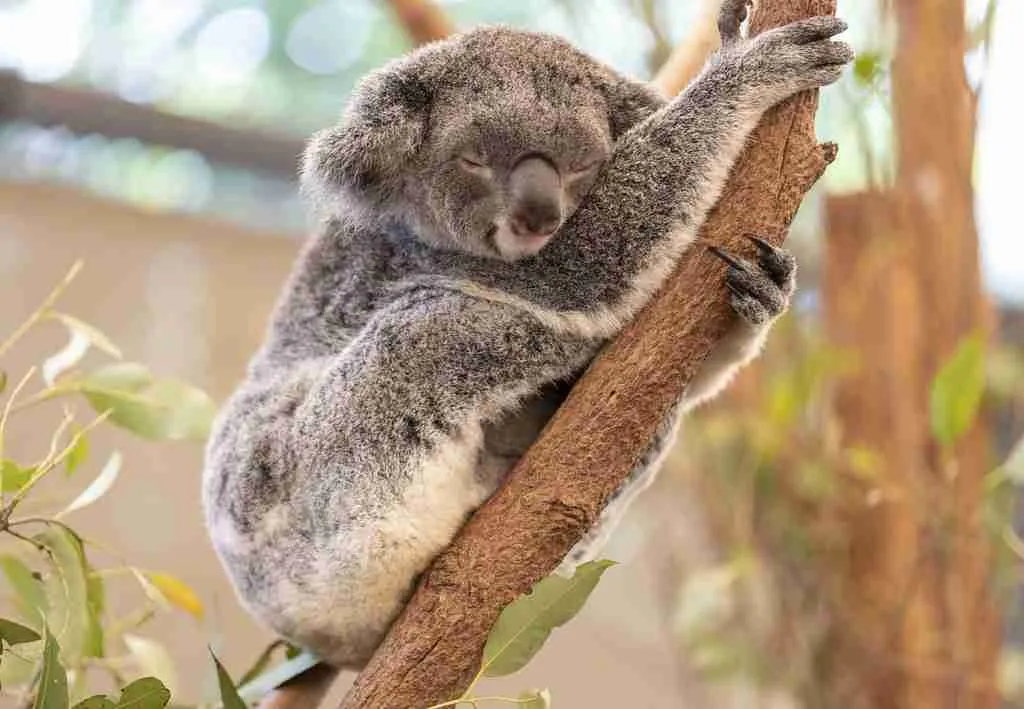
READ ALSO: 24 Fun Facts About Penguins You Never Knew
Koalas are champions of sleep, with their daily slumber stretching up to 18 hours. This extraordinary sleeping schedule is among the longest in the animal kingdom.
But it’s not all about laziness, this extensive downtime is an integral part of their lifestyle. In the safety of their treetop homes, koalas curl up and sink into a deep sleep, a sight as endearing as it is intriguing.
5. Eucalyptus leaves make up most of a koala’s diet.
Koalas focus on only certain eucalyptus species. They spend many hours chewing at night.
Only a small number of trees are edible. Even among those, taste can vary widely.
6. Each forepaw has two opposable digits for grip.
They have two “thumbs” on each front paw. This lets them hold branches firmly.
Their hind feet carry a grooming claw. This helps with cleaning and climbing too.
7. Male koalas use a special chest gland to mark trees with their scent.
A bare patch on their chest produces an oily secretion. They rub it against trees while moving through their range.
This scent leaves behind a strong signal for others. It tells rivals and females who has been nearby.
8. Baby koalas are called joeys, like other marsupials.
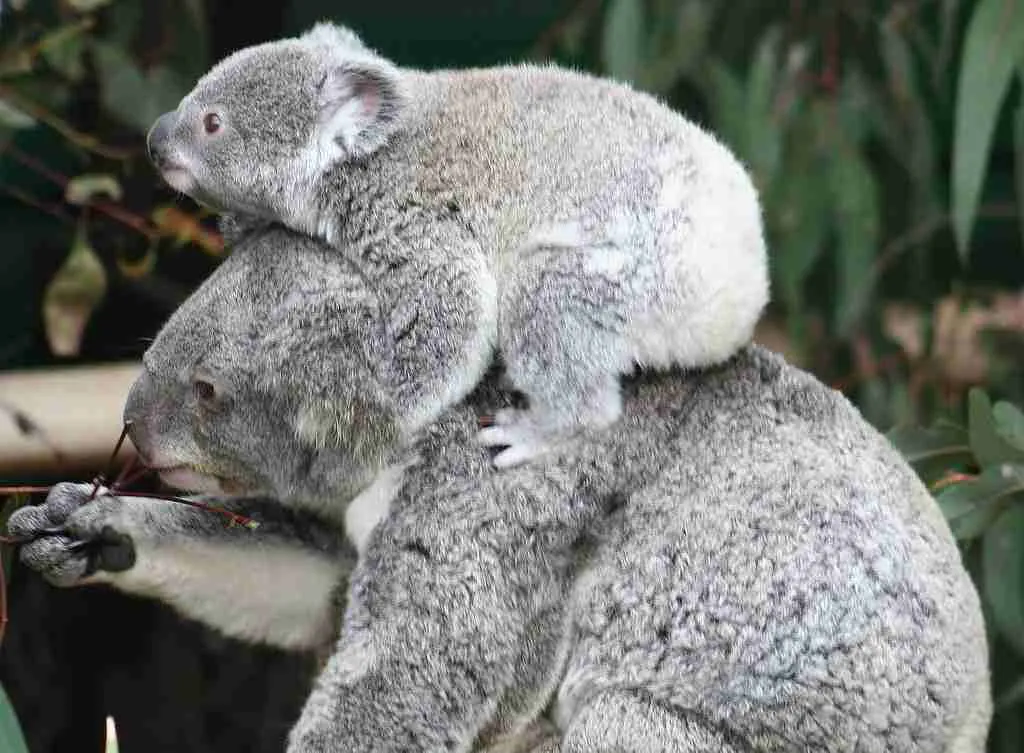
READ ALSO: 22 Fun Facts About Pandas | Unleashing the Cuteness
In the kingdom of marsupials, baby koalas share a cute moniker with their kangaroo cousins, they’re called joeys.
What’s fascinating about these joeys is their size at birth a newborn koala joey is merely about 2 centimeters long, no bigger than a jelly bean.
9. Male koalas produce deep bellows that can travel over long distances.
Their calls sound like a mix of snores and roars. The noise carries mostly during the breeding season.
Bigger males often create deeper and louder bellows. These calls impress females and warn off competitors.
10. Newborn Koalas live in their mother’s pouch for about six months.
When a koala joey is born, it finds haven in its mother’s pouch where it stays for about six months. This cozy spot provides the perfect environment for the tiny creature to grow and develop.
During this period, the joey is nourished by its mother’s milk and begins to form the distinct features of a koala.
11. Female koalas usually raise a single joey at a time for better survival.
A lone offspring receives full attention and steady milk supply. Twins may occur but often struggle to survive.
Breeding success improves in seasons with good food. Poor quality leaves can delay reproduction altogether.
12. Koalas have large noses, which are very sensitive to smell.
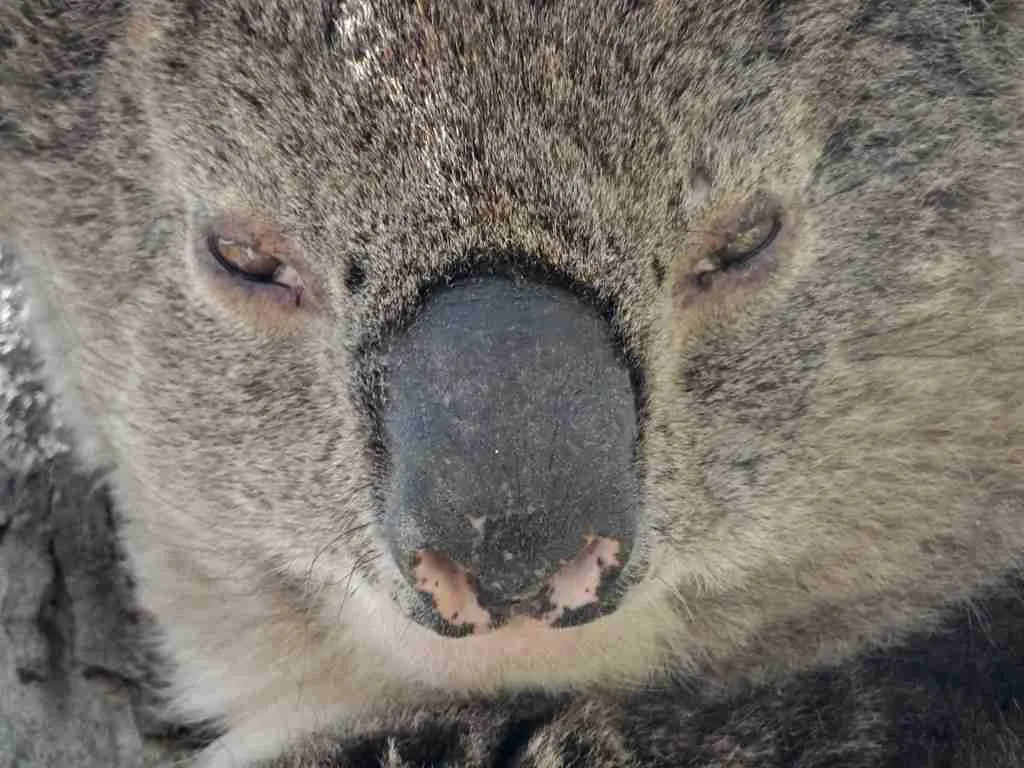
READ ALSO: 26 Interesting Facts About Peacock (The Bird with the Bling)
Koalas have large noses that are very sensitive. Their noses help them pick the best eucalyptus leaves to eat.
They can even smell which leaves have more water, which is helpful in dry seasons. So, a koala’s big nose is not just a cute feature, it’s a vital tool for their survival.
13. Chlamydia is a serious disease that threatens many wild koala populations.
The infection can cause blindness and infertility over time. Stress and habitat damage raise the risks further.
Wildlife carers test and treat infected animals regularly. Vaccination programs are under trial to protect them.
14. Ongoing habitat destruction remains one of the greatest threats to koalas.
Clearing trees removes the eucalyptus they depend on. Expanding roads split apart their home ranges.
Predatory dogs and passing cars increase dangers. Conservation efforts focus on corridors and safe habitats.
15. Intense bushfires can destroy koala habitats and food trees for years.
Flames strip the canopy of both food and shelter. Surviving koalas often face barren territories.
Regrowth takes years depending on rainfall. Rescue groups help feed and protect them in the meantime.
16. koalas are often perceived as one of the dumbest animals.
READ ALSO: 24 Interesting Facts About Bobcats: Fierce & Fuzzy
Koalas, popularly viewed as dumb, have uniquely small brains for mammals. They exclusively prefer eucalyptus leaves, curiously ignoring them on plates but munching directly from trees.
Despite hygiene concerns that lead to diseases like chlamydia, their endearing appearance and Australian charm ensure they remain adored by many.
17. Wild koalas usually live between ten and twelve years in their habitats.
Females generally outlast males in the wild. Captive individuals can reach around fifteen years.
Worn teeth limit their ability to chew leaves. Seniors grow slower and weaker as molars flatten.
18. The word “koala” likely comes from an Indigenous term meaning no water.
Many believe it traces back to the Dharug language. It reflects the koala’s rare drinking habits.
Different groups use slightly varied spellings of the word. Oral tradition keeps the meaning alive today.
19. Young male koalas travel long distances to establish new home ranges.
This reduces conflict and prevents inbreeding within groups. Roads and fences make journeys dangerous.
Wildlife crossings improve their chances of survival. Careful planning helps lower deaths on highways.
20. Koalas can live up to 10 to 15 years in the wild.
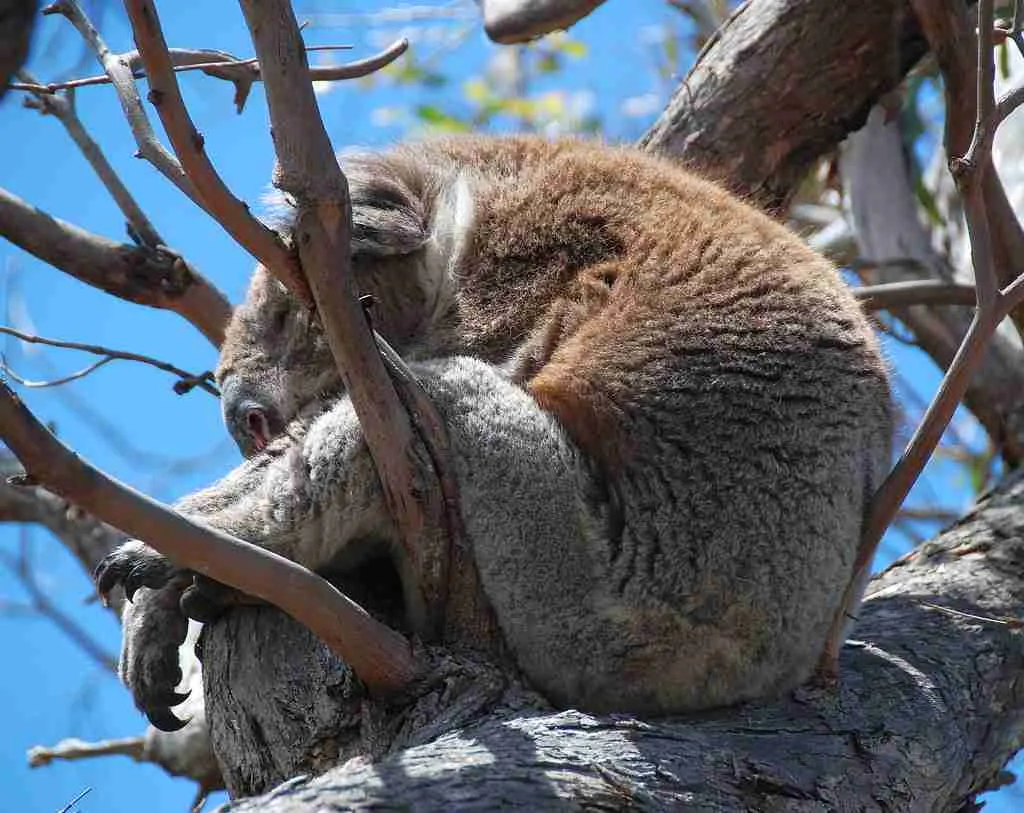
READ ALSO: Fun Facts About Cougar- America’s Largest Cat
In the wild, koalas have a life expectancy of around 10 to 15 years. Their longevity is influenced by many factors, including diet, habitat, and the absence of threats like predators or disease.
During this lifespan, they contribute to the health and diversity of their eucalyptus forest homes, making each koala’s life vital for the overall ecosystem.
21. After leaving the pouch, joeys ride on their mother’s back for months.
They cling tightly while she climbs and feeds. This helps them build strength gradually.
Rides last until they are about one year old. Mothers then gently push them to independence.
22. Wild koalas live only in eastern and southeastern parts of Australia.
Their natural range stretches from Queensland down to Victoria. South Australia also has established populations.
Past relocations reshaped some of their current ranges. Modern conservation manages population movement carefully.
23. The koala population has been majorly affected by habitat destruction.
The koala population has suffered greatly from habitat destruction. Deforestation and land clearing for urban development have led to the loss of many eucalyptus forests, which are the koala’s primary habitat.
24. There are three subspecies of Koalas.
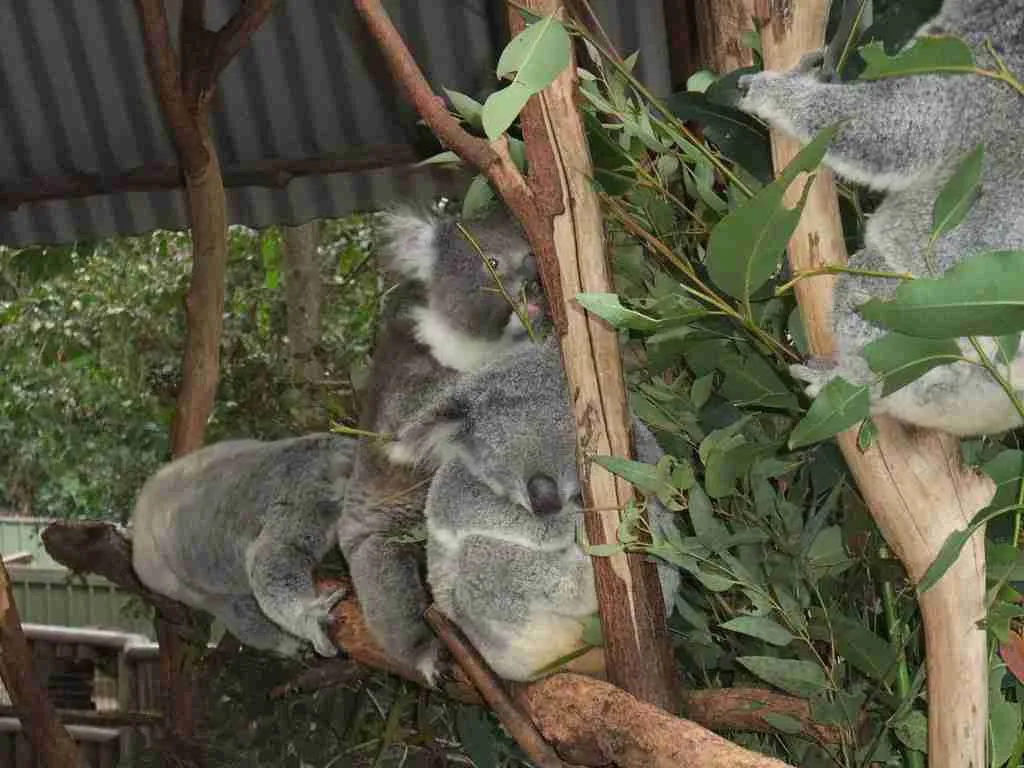
READ ALSO: 25 Fun Facts About Swans That Will Blow Your Mind
There are three subspecies of koalas, each adapted to different climates and regions in Australia.
These include the Queensland koala (Phascolarctos cinereus adustus), the New South Wales koala (Phascolarctos cinereus cinereus), and the Victorian koala (Phascolarctos cinereus victor).
25. Conservation efforts now focus on protecting habitat, health, and road safety for koalas.
Groups map critical feeding trees and plant corridors. Wildlife clinics rescue and treat injured animals.
Fences and crossings reduce deadly road accidents. Councils, scientists, and local groups work together
FAQs
Koalas are marsupials found only in Australia, known for their round faces, fluffy ears, and stout bodies. Despite being commonly called “koala bears,” they are not bears but unique pouch-carrying mammals. They spend most of their lives in trees, resting and feeding.
Koalas survive almost entirely on eucalyptus leaves, choosing only certain species that are safe and nutritious. These leaves are tough and low in energy, but koalas have special stomach microbes that help them digest them. Eucalyptus also provides most of the water they need.
Koalas live in eucalyptus forests and woodlands across eastern and southeastern Australia. They spend most of their time high in the branches, where they rest and feed. Their natural range includes Queensland, New South Wales, Victoria, and parts of South Australia.
Koalas are endangered primarily due to habitat destruction, climate change, and diseases like chlamydia. koalas were listed as Vulnerable on the IUCN Red List. Precise population numbers are hard to estimate due to the koala’s wide distribution across Australia, but some estimates suggest there may be as few as 43,000 to as many as 100,000 koalas left in the wild. Koalas are endangered primarily due to habitat destruction, climate change, and diseases like chlamydia.
While often referred to as a koala bear due to its teddy bear-like appearance, the koala is not a bear at all. It’s a marsupial, which is a category of mammals characterized by carrying their young in a pouch. This common nickname can be misleading, as it doesn’t accurately reflect the koala’s true biological classification.

